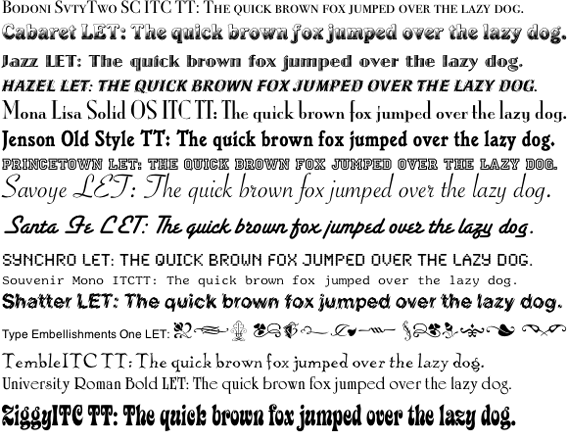Switch fonts and save $400 million?
Suvir Mirchandani, a 14 year-old student from Pittsburgh, discovered that by changing fonts the federal government could save up to US $136 million per year. This idea arose after Mirchandani noticed he was receiving more paper handouts at school, and wanted to find a more ecological and cost-friendly printing standard. Motivated by his passion—using computer science to promote environmental sustainability—Mirchandani’s goal was to find a better way to minimize the amount of paper and ink used.
His school had already discussed saving money and conserving resources, like recycling and using both sides of the paper. Adding a new wrinkle, Mirchandani pointed out that, “Ink is two times more expensive than French perfume by volume.” Chanel No. 5 costs US $38 per ounce, while the same amount of HP ink can be up to US $75. So, Mirchandani focused his project on finding a way to cut down on ink.
Collecting random of samples of the most commonly used characters, Mirchandani charted four different typefaces (Garamond, Times New Roman, Century Gothic, and Comic Sans). Measuring how much ink was used for each letter, he calculated that Garamond, because of its thinner strokes, would reduce ink consumption by 24% and annually save his school up to US $21,000. Extrapolating his findings to state and local governments, Mirchandani found that the total savings for both federal and state level governments could be as much as $394 million. He published his research in the Journal of Emerging Investigators, a student-run publication at Harvard.
Despite the teen’s best intentions, his thesis does have two flaws: for one, not all 12-point fonts are created equal. Printing Garamond in a 12-point font is unrealistic, because Garamond is small and difficult to read at 12-point. Considering this, many printers would opt for a larger size, which would end up costing the same amount as printing Times New Roman at 12-point.
The other problem is the government doesn’t print the same way individuals do. “Many of the documents that account for the substantial percentage of the government’s overall printing costs are printed on printing press, using offset lithography,” says typographer Thomas Phinney in a post about Mirchandani’s study. Lithography is a type of printing in which a flat surface is treated to repel the ink except where one needs to print. The percentage of ink used is actually much smaller than that for laser or inkjet printing. Additionally, because of the huge cost of owning a printing press, many lithography jobs are printed using third-party printers.
Sadly, the government isn’t considering Mirchandani’s modest proposal because government officials are already trying to print less paper. “In 1994, we were producing 20,000 copies a day of both the Federal Register and Congressional Record. Twenty years later, we produce roughly 2,500 print copies a day,” said Government Printing Office’s Media and Public Relations Manager, Gary Somerset. In January, Senators Amy Klobuchar and Saxby Chambliss recognized the shift of government documents from press to digital by introducing legislation to change the Government Printing Office’s name to the Government Publishing Office.
On top of this, the Congressional Register is printed on recycled paper, which the GPO has been doing for five or six years, Somerset says. One federal initiative that focuses on minimizing ink-usage is called “Printwise.” Implemented 18 months ago by the General Services Administration, it teaches government offices how to default their computer settings to Times New Roman, Garamond and Century Gothic to minimize printing waste. According to GSA’s press secretary Dan Cruz, they hope this type of initiative could ultimately save the federal government up to $30 million annually.
The result of all these changes is a system that uses fewer resources and costs less. This process may be gradual, but the measures should add up to the outcome that Mirchandani hoped for.
Sources: cnn.com, theatlantic.com

On her third year on the Talon, Faria is serving as co-EIC with Michael Borger (God, help us all). As a senior, Faria discovered the key to success–and...










